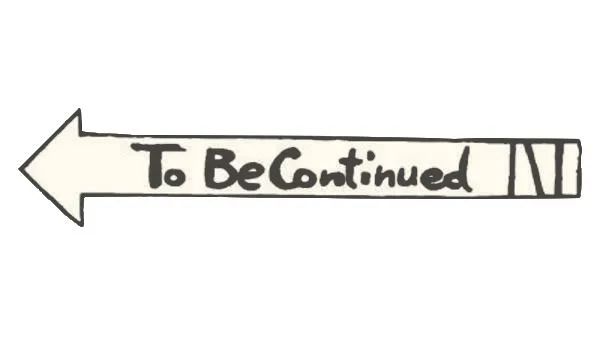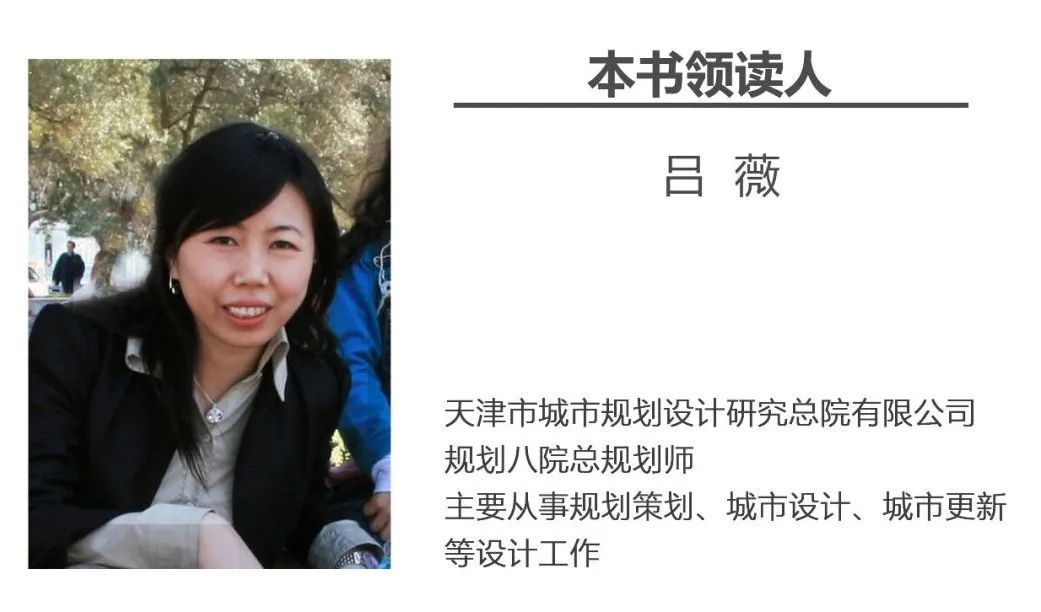Part One
Introduction to Urban Fabric
~Examine the past, define current urban practices, identify shortcomings, and propose a comprehensive framework to reimagine future urban practices~
As of 2015, there are 22 cities with populations exceeding ten million and 61 cities with populations exceeding five million on this planet, marking the onset of the “urbanization era.” However, issues such as concentrated pollution, excessive crowding, lack of open spaces, and long commuting times often lead to cities being perceived as the most unhealthy living environments. Therefore, the author challenges those engaged in urban design and those considering entering this profession: Designers, do you possess the methods, strategies, and principles to transform urban populations into positive, culturally rich, and noble communities?
It is essential to understand that a well-planned “city” can serve as a model for a sustainable living environment. By concentrating infrastructure, creating walkable spaces, and minimizing human land use, cities profoundly impact the environment and public life. Excellent urban fabric opposes suburban sprawl and advocates for concentrated land use; it opposes universally applicable designs and promotes building types suitable for regional development while creating livable and desirable communities.
In the upcoming urbanization era, thinking solely from a single design project is entirely insufficient.Excellent urban fabric is not necessarily linked to complex data statistics, functional problem-solving, or any specific decision-making processes. On the contrary, successful cities arise from advocating for human values and principles that are easier to understand. These values and principles emphasize both tangible and intangible sustainability in design, reflecting humanity’s relentless pursuit of excellence (the core values of this book). In the 21st century, enthusiasm for architecture must be combined with certain design principles that are not only adhered to by all successful cities but also serve as the fundamental guidelines for the urban fabric industry (the nine principles).
In the first part, SOM proposes that urban design is influenced by economic and political forces to achieve desired outcomes. Urban design is understood as a key responsibility emphasizing public interest, such as managing open spaces, transportation and road networks, community services, and municipal facilities. Therefore, urban design requires interdisciplinary thinking to address the complex, diverse, and numerous issues in urban design solutions, and it should follow a fundamental design process, namely: 1. “Read the land”; 2. “Compare multiple proposals”; 3. “Select a proposal”; 4. Design important expressive “images”; 5. Propose “design principles.”
Formulating “design guidelines” must be based on reasonable public interest, and to maximize architectural creativity, design guidelines should not only be concise but also leave room for future interpretation and reinterpretation.
Urban design must seriously consider geographical scale factors, which can range from national or administrative province scales to the detail of streets and individual buildings. Each scale of planning should first select different “design elements,” and each scale ultimately relates to the overall principles for building livable cities.
SOM proposes the following design scales (from large to small): regional scale, urban scale, district scale, city center scale, residential community scale, commercial area scale, civic center scale, park scale, production distribution and maintenance area scale, air and sea port scale, public domain scale.
Part Two
Nine Principles of 21st Century Urban Design
~Transform the proposed comprehensive framework into nine best practice principles, which are universally applicable for achieving successful and livable urban environments. SOM illustrates these principles through a series of urban construction projects globally~
Below, we detail these nine principles:
01 Sustainability
Sustainability is a commitment to the environment, meaning responsible land management by providing a method to avoid or reduce the consumption of non-renewable energy..
Issues: Overdevelopment and abuse of the environment, energy wastage, land degradation, air and water pollution.
In addressing these issues, two major themes must be implemented:
1 Natural Environment Fabrication
1) Environmental carrying capacity: Protect the quality of air and water environments, determine development carrying capacity.
2) Land use function management: Protect or regenerate irreplaceable land resources, determine land division methods.
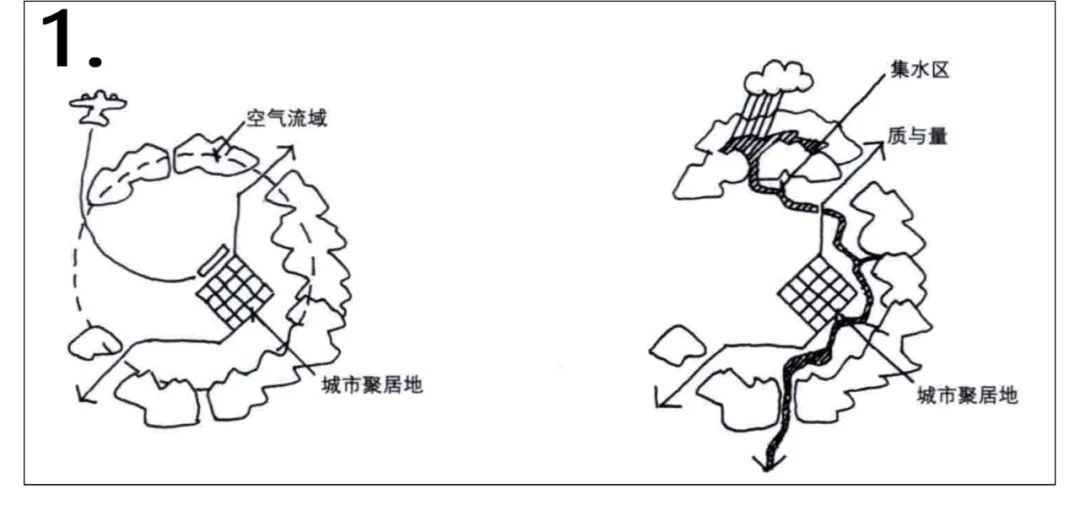
1) Build infrastructure to guide development: Infrastructure that meets sustainability goals should be prioritized to drive regional development.
2) Manage settlements: Conduct compact, integrated planning for both new development projects and already developed land, and control urban growth boundaries.
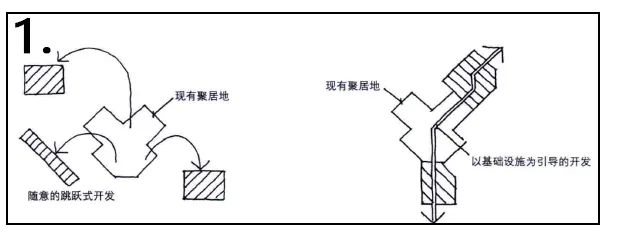
Case 1: Creating an overall framework for sustainable settlements—The Federal Service System for National Land Use Planning in the USA
Case 2: Choosing the right future—California Tomorrow Plan
Case 3: Expanding the city/Preserving green spaces—Overall planning for Chongming Island, Shanghai, China
Case 4: Guiding the nation into a post-oil future—National Planning for Bahrain
02 Accessibility
Accessibility is defined as facilitating the flow of goods and people, emphasizing the importance of a safe and comfortable walking environment, with the goal of promoting ease of movement.
Issues: Congestion, traffic jams, time wastage, enclosed neighborhoods with walls and gates, lack of safety and comfort for pedestrians, dependence on cars.
Accessibility in cities can be approached from two aspects:
1 Freight and Passenger Transport
1) Compact development: Urban centers are often highly compact and pedestrian-friendly, with a convenient public transportation system that minimizes travel time and distance, saving time and energy for commuting.
2) Concentrated destinations: To some extent, planners concentrate destinations, including urban centers, mixed-use industrial/R&D parks, and business districts, to compensate for insufficient development intensity.
3) Small blocks and streets: Large blocks with wide peripheral streets should be paired with small blocks that have narrow streets, making pedestrians feel more comfortable and safe, thereby encouraging walking.
4) Adequate systems: Multiple parallel street options allow traffic to be redirected to other roads when one road reaches its capacity limit.
5) Multi-modal: Travel corridors accommodating multiple modes (pedestrians, bicycles, buses, and private cars) can provide the highest flexibility for urban traffic management.
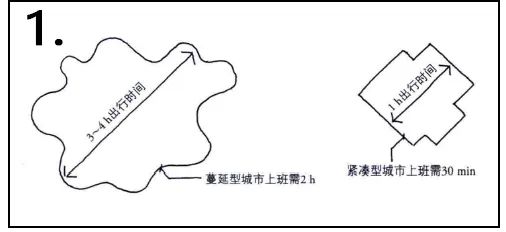
2 Traffic Flow
1) Land reserves: To avoid higher costs of land acquisition and demolition in the future, proactively reserve sufficient land for future or necessary transportation corridors.
2) Location of corridors: Major transportation corridors should be located at the edges of communities and districts, and they should not occupy urban spaces of public value, such as waterfronts.
3) Geometry and scale: In recent years, there has been a greater emphasis on pedestrian comfort and safety, shifting from promoting higher vehicle speeds to smaller turning radii and increasing sidewalk widths.
4) Street types: Streets can be unified, have central medians, or two central medians, allowing vehicles to pass through from side lanes, with the central median also serving to separate motor vehicles from light rail or bicycles.
5) Street design treatment: Streets primarily designed for pedestrians can incorporate landscape treatments to slow down vehicles, as they must navigate in a winding manner, making them more friendly to pedestrians and bicycles.
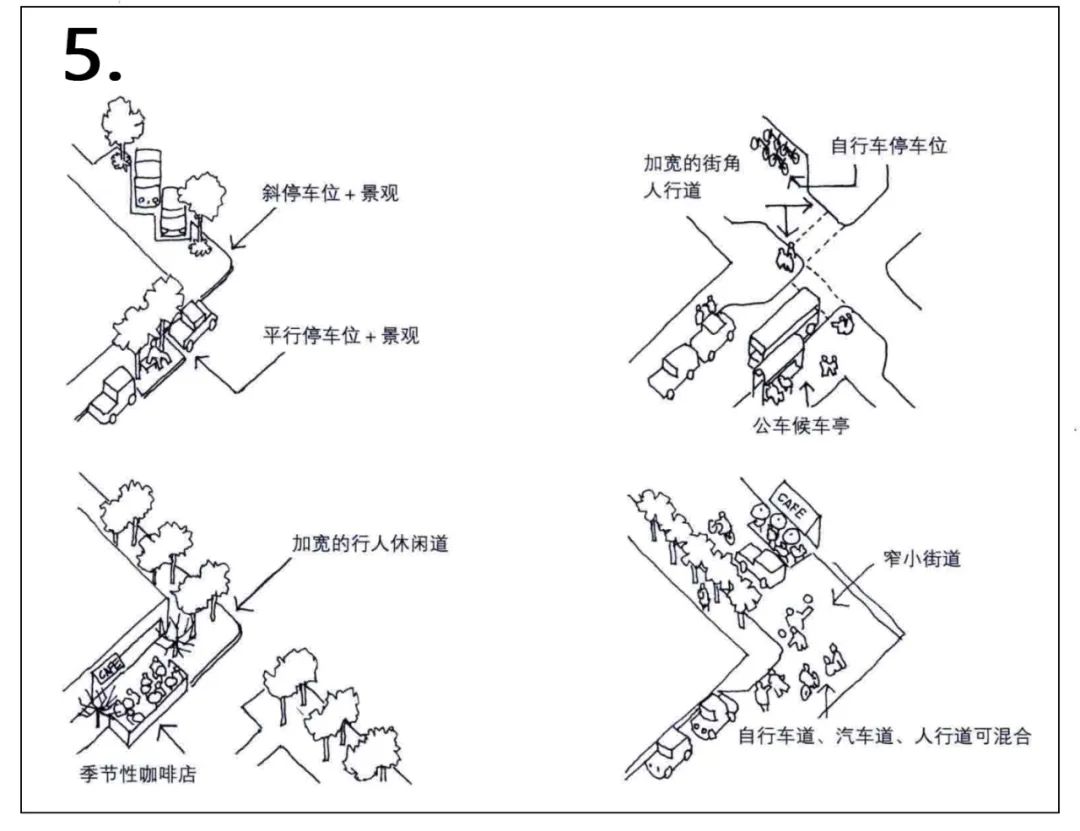
Case 1: Locating traffic corridors away from urban centers—Highway Planning in Baltimore, Maryland
Case 2: Creating basic corridors for major development projects—Canary Wharf, London
Case 3: Ferry transport planning—Overall planning for Treasure Island, San Francisco, California
Case 4: Learning from mistakes: Multi-functional streets and public transport shopping streets—State Street, Chicago, Illinois
Case 5: Smooth passage—East Side of Detroit, Michigan
Case 6: Restoring passage, reversing stagnation and decline—Central Business District of São Paulo, Brazil
03 Diversity
Diversity is defined as the greatest variety and choice within the urban environment, maintaining diversity and selectivity. It is self-evident that the best cities can offer the most diverse choices to their citizens, and these choices are all potentially realizable.
Issues: Lack of service facilities, lack of visual interest, subpar environments, affordability issues, and a singular fixed design mindset.
Urban diversity can be approached from two aspects:
1) Preservation: Protecting famous landscapes, historical street patterns, and interesting historical buildings is one aspect of maintaining visual appeal and defining urban characteristics.
2) Design diversity: Guidelines can determine different facade treatments, entrance features, building heights, building setbacks, landscape features, and other similar elements, which are critical for all large development projects.
3) Small-scale plots: One way to enhance building diversity is to invite many independent designers and construction units to participate in the development of the same project.

1) Affordability: Cities and regions must protect land or provide funding support to maintain affordability for specific functional uses, encouraging social and economic diversity.
2) Proximity: Mixed-use should be located based on the frequency of use of different functions.
3) Critical scale: The scale and density of residential functions should facilitate walking to public transport facilities, service facilities, and commonly used commercial buildings.
4) Mixed types: Mixed use can be achieved not only horizontally but also vertically, for example, by building residences above ground-floor shops.
Case 1: Bringing diversity to the Capitol—Reconstruction of Pennsylvania Avenue in Washington, D.C.
Case 2: Integrating diversity during urban expansion—South Saigon, Ho Chi Minh City, Vietnam
Case 3: Creating diversity under unified residential standards—Residential community in Tianjin Economic Development Zone, China
Case 4: Unearthing local characteristics—Shanghai Zhangjiang Hi-Tech Park, China
Case 5: Infusing diversity—Park Avenue in Chicago, Illinois
04 Open Spaces
The principle of open spaces is to reshape natural and man-made systems to green cities. All open space systems can promote the achievement of sustainability goals.
Issues: Loss of natural habitats, insufficient recreational spaces, and buildings and hard surfaces that create a sense of oppression.
The principles for creating and reconstructing urban open spaces are divided into three main areas:
1 Habitats and Natural Systems
Large regional open spaces are generally located at the urban edges or within natural systems that traverse cities, serving typical environmental roles:
1) “Providing habitats and migration corridors for wildlife”
2) “May also serve as drainage channels, lakes, rivers, and farmland, which are important watersheds”
3) “Large habitat spaces are also most suitable for slow-paced recreation and educational uses”

2 Recreation and Urban Landscape
Three design elements must be considered in urban landscapes:
1) Human activities: For example, a portion should be reserved for sports and fitness activities.
2) Environmental purposes: Dense urban forests can cool the air, reduce ozone, and consume carbon dioxide.
3) Scale requirements: Based on observations of successful and livable cities, the size of open spaces can vary greatly depending on urban environments and cultures.

3 Presence of Nature
The presence of nature in the urban context can be established in various ways:
1) Preservation: Natural and man-made landscape elements must be protected and preserved, as they can alleviate urban density and provide unique identification and physical characteristics for the city.
2) View corridors: View corridors leading to natural landscapes and from natural landscapes outward must be protected to showcase the uniqueness of the city.
3) Connection to landscapes: Most major cities worldwide are built on the shores of seas, lakes, and rivers. To continue growing, cities often landfill wetlands and other natural waterfront habitats. The filling of land is most susceptible to the hazards of global warming and potential massive storm surges, but our responsibility is to find environmentally friendly waterfront transformation methods that not only do not obstruct coastal views but also provide some safety protection.

Case 1: Bringing diversity to the Capitol—Reconstruction of Pennsylvania Avenue in Washington, D.C.
Case 2: Integrating diversity during urban expansion—South Saigon, Ho Chi Minh City, Vietnam
Case 3: Creating diversity under unified residential standards—Residential community in Tianjin Economic Development Zone, China
Case 4: Unearthing local characteristics—Shanghai Zhangjiang Hi-Tech Park, China
Case 5: Infusing diversity—Park Avenue in Chicago, Illinois
05 Compatibility
Compatibility refers to the ability to maintain visual harmony and balance among urban architectural elements. The importance of this principle is that it can serve as a guiding principle for designing new buildings suitable for existing communities and districts.
Issues: Incompatible, discordant, and confusing urban communities and built environments.
Compatibility includes three aspects:
1 Relationship with Surrounding Environment
Truly livable places often adapt in scale and form to their surroundings, neither being discordant nor too large or too small or mismatched with the characteristics of the site. To achieve this harmony, two fundamental points are included:
1) Design process: Urban design must undergo research and examination to determine how the project integrates into the surrounding environment.
2) Characteristics of the surrounding environment: This includes defining land use, infrastructure, natural systems, geological conditions, topography, and surrounding buildings and landscapes.

2 Building Scale
To determine project characteristics, designers must first clarify the types and locations of potential uses, as the scale of a building is the most critical element of compatibility. To determine suitability, three design elements can be considered:
1) Lot size: Planning similarly sized lots helps ensure that buildings have comparable footprints and greatly assists in determining overall building scale.
2) Building scale: The height, setback relationships, and floor area of the entire building complex can create strong compatibility.
3) Building mass: An excessively bulky building can suppress or even destroy the scale of surrounding buildings, especially in areas where existing buildings are smaller in mass; thus, guidelines for volume control become particularly necessary.
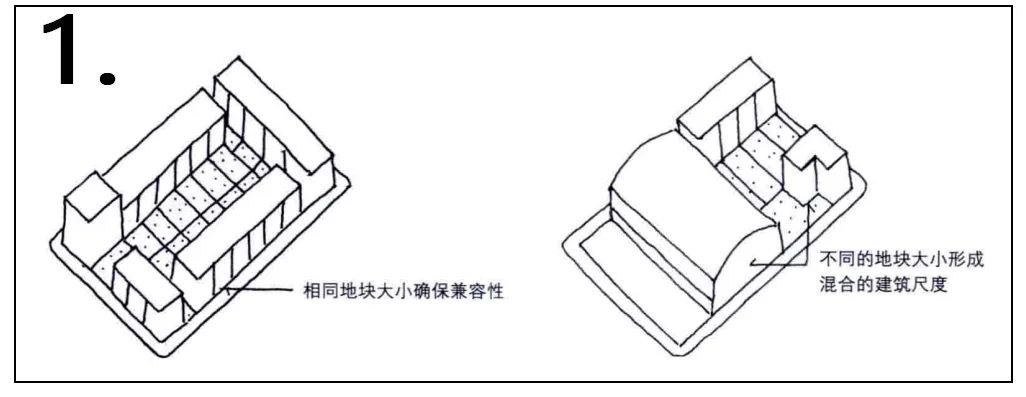
3 Architectural Features
In this regard, the author’s view is that architectural features should respect the surrounding environment while reflecting the characteristics of the “era” in which they are situated. This will be defined through four design elements:
1) Architectural detailing: Specific design styles are the most apparent markers of distinguishing characteristics. Currently, a simple replication of historical architectural styles dominates suburban North America, China, and Japan.
2) Building color: Guidelines for building color generally adopt “color value” indicators. Light-colored buildings can reflect the state of shadows and sunlight, with their surface characteristics changing throughout the day. Dark-colored buildings show little variation in sunlight and create a strong silhouette effect against the sky.
3) Building materials: Guidelines for building materials can easily form clear identities in corporate and academic parks.
4) Historical preservation: To maintain the overall sense of regional historical characteristics, design guidelines require new buildings to comply with regional historical preservation regulations. This harmony is not merely a simple replication of historical styles but an absorption process, reflecting both the era in which they exist and respecting the surrounding historical community.
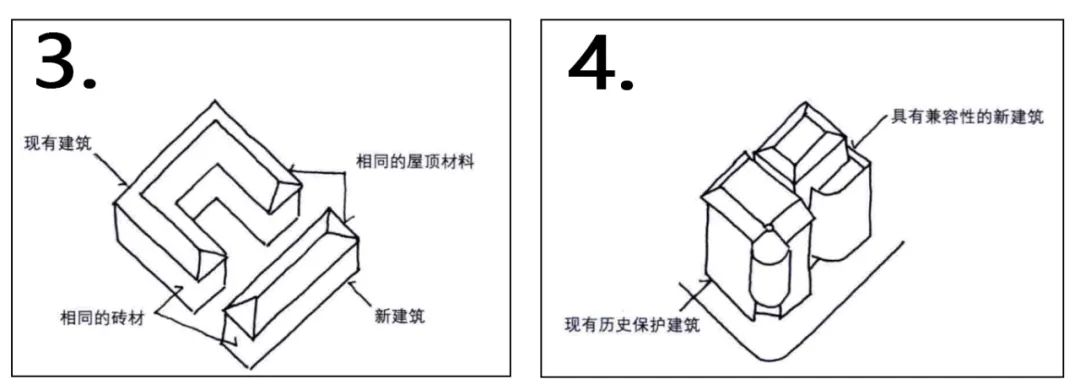
Case 1: Creating identity while preserving heritage—Taiping Bridge area (Xintiandi) in Shanghai, China
Case 2: Protecting historical heritage while controlling development intensity—Foshan, China
Case 3: Preserving rural landscapes—National Interest Operations Zone in Paris
Case 4: Revitalizing neighborhood forms and architectural types—Elephant and Castle area in London













